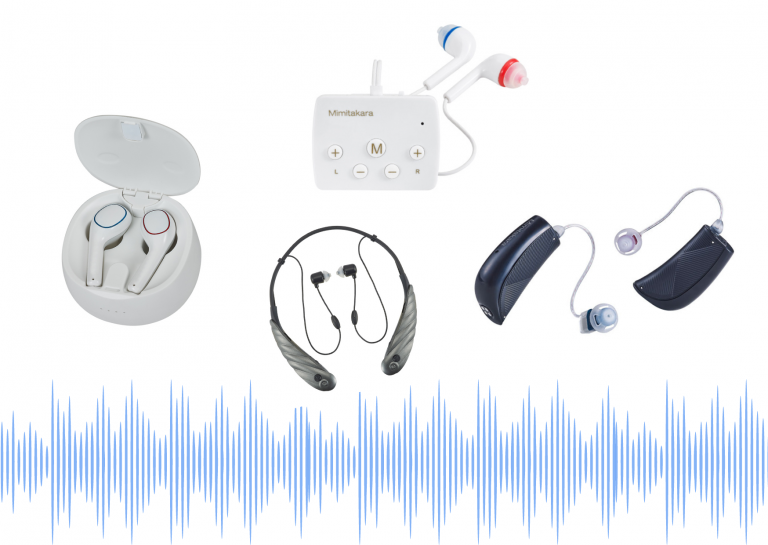
“Number of Compression Channels” in Digital Hearing Aids: What You Need to Know
The “number of compression channels” is one of the most familiar features of digital hearing aids. This is mainly because most hearing aid manufacturers use the number of channels to differentiate product levels and pricing. Hearing aids with more channels are generally considered more powerful, effective, and expensive. However, this statement is only true under limited conditions—comparisons should only be made within the same brand, product model, and series.
Due to misunderstandings and marketing misuse, some manufacturers have created confusion around this term. For example, using the term “digital signal frequency processing” makes the numbers appear more complex and gives the impression of a higher-level product, even though this is misleading.
This article explains the strict definition of “number of compression channels” to avoid confusion with marketing terminology. Most hearing aids perform digital signal processing in the frequency domain, which means the device splits sound into multiple “channels” for processing. Each channel processes signals within a specific frequency range.
In theory, each digital processing channel can independently adjust settings such as compression threshold, compression ratio, gain, and output limits, making each channel a separate compression channel. Advanced hearing aids may combine two or more digital processing channels into a single compression channel.
Necessity:
Hearing aid users’ audiometric data is often limited, typically not exceeding 10 frequency points (e.g., 250, 500, 750, 1000, 1500, 2000, 3000, 4000, 6000, 8000 Hz). Some users may only require 2–4 channels. Adding more compression channels beyond the essential ones often provides little additional benefit. Research shows that for flat hearing loss, increasing compression channels beyond 6 does not significantly improve speech perception. For sloping hearing loss (greater high-frequency loss), increasing channels beyond 8 usually yields no significant improvement.
Time Efficiency:
Adjusting each frequency channel is detailed and complex. Using compression channels simplifies the process, saving time for both audiologists and users.
Power Efficiency:
More detailed processing consumes more battery power, requiring more frequent battery replacements or recharging.
Flexibility:
Hearing aids with more digital processing channels than compression channels allow for finer adjustments. Crossover frequencies between compression channels can be altered to suit the user’s type of hearing loss.
In practice, the term “compression channels” usually refers to channels that can adjust gain for both low and high input levels within their frequency range. Some manufacturers also list additional information such as fitting channels, fitting bands, or control handles in specifications. If only “number of channels” is provided, the true number of compression channels can often be observed through the hearing aid’s fitting software interface.

Although the number of compression channels does not expand as continuously as the number of digital signal processing channels, commonly available hearing aids now offer up to 24 adjustable compression channels. However, it is still important to consider whether such high numbers provide measurable benefits. Research shows that a hearing aid with 7 compression channels offers better outcomes than one with 4 channels. Yet, comparing a hearing aid with 8 channels to one with 20 channels shows no evidence that either configuration provides superior improvement in speech perception in quiet environments.
Modern hearing aids are designed to recognize “quiet environments” immediately. This raises the question of whether additional channels make a difference in complex listening situations. Even with more than 8 compression channels, there is no longer sufficient clinical value. Additional digital processing channels allow for more advanced processing strategies, but manufacturers differ in their considerations and algorithms.
There is no standard comparison or measurement method for complex listening environments, and no objective way to confirm which approach is better or sufficient. Once the number of channels reaches a certain level, brands design differently. For example:
Brand A may configure 64 digital processing channels into 16 compression channels.
Brand B may configure 48 digital processing channels into 16 compression channels.
With 20 compression channels, visual comparison of numbers becomes difficult, and such comparisons may not hold practical meaning.

เราใช้คุกกี้เพื่อพัฒนาประสิทธิภาพ และประสบการณ์ที่ดีในการใช้เว็บไซต์ของคุณ คุณสามารถศึกษารายละเอียดได้ที่ นโยบายความเป็นส่วนตัว และสามารถจัดการความเป็นส่วนตัวเองได้ของคุณได้เองโดยคลิกที่ ตั้งค่า